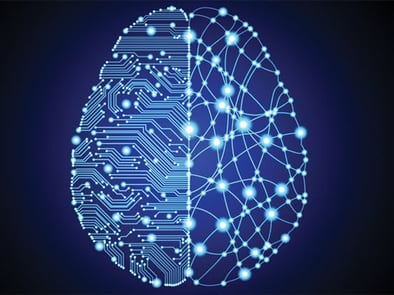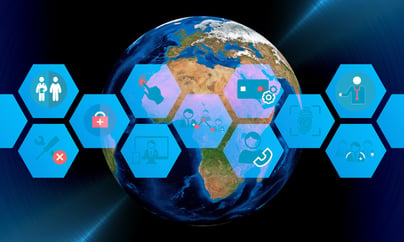Powering AI To Create A Patient-Centric Ecosystem
Creating efficient workflows and disrupting workforces are two topics that spark decision makers to ask: “How does this affect my industry?” Healthcare providers are among those who are looking for ways to improve patients’ healthcare journey throughout medical systems using artificial intelligence.
The Basics
Artificial intelligence (AI) has been a popular topic for a number of years in the business world. It is known for its ability to improve efficiency in operations by sparing humans from tedious tasks, and is sometimes misconceived as the surge of robots set to take over humanity's most prized jobs.
To save some concern, discussing AI does not always refer to powerful machines that are capable of performing superhuman-like activities. In current and more common applications, AI is a form of advanced computer activity that is able to store and learn from human programming using custom-made convolutional neural networks (CNNs), effectively acting much like a human brain does. With this type of “brain power,” AI has the ability to learn based on user inputs. Hence, the more inputs AI receives, the greater it learns and is able to produce a variety of outputs with higher accuracy, a process commonly known as machine learning (much like how you’re more likely to become knowledgeable on a topic the more you’ve read about it).

Revolutionizing Healthcare
Machine learning has been a valuable asset to many intricate industries, including health operations. For example, while conducting research in pathology, sifting through countless patient profiles and pieces of data becomes a time consuming task for humans. However, AI has the ability to “analyze large datasets” with very minimal processing power.1 From the information obtained by AI, medical experts can then provide meaning to this data by labelling them with diagnosis confirmation using their own real-world experiences.
In the case of dermatology, CNNs are programmed with powerful algorithms built to process a bank of pre-labelled pathology images of skin lesions. In this scenario, a dermatologist would submit an image of their patient’s skin to the AI algorithm, where it would identify visually similar images to the inputted image. By doing so, AI is acting as an efficient clinical decision support tool that provides medical professionals with an intuitive and accessible educational resource for confident evidence-based diagnoses.
Intelligent dermatology software, such as DermEngine, uses these powerful AI algorithms to recognize the most subtle changes in skin spots and other lesions with the Visual Search feature. Research shows that by combining the skills of medical experts and AI software, there is nearly a perfect identification of cancerous cells with an impressive 99.5% accuracy.2 It’s evident that AI technology saves dermatologists a great deal of time while increasing their diagnostic accuracy - essential for optimized patient care.
Creating A Patient Ecosystem
The synergy between dermatologists and AI has not only improved the early detection of skin cancer, but also created workflow efficiencies with an overall enhanced care framework for patients. AI has the potential to promote a balanced ecosystem in dermatology practices that connects primary care, specialized consultations, diagnoses, and perhaps most importantly, quality treatments.
By being involved in each step of a patient’s journey, AI is able to learn from medical training and instructional inputs based on the unique information associated with large numbers of medical stories. The patterns established by the pre-labelled pathology diagnoses are an essential source of information to increase accuracy in future diagnostic trials. AI’s power can be leveraged by training the algorithms with large amounts of such data, acting more as a reliable medical advisor and a supplement to human judgement and expertise.
Using AI and expert-calibrated knowledge, specialized dermatology practices will eventually have enough data to detect disease development patterns, and provide personalized quality care. Connected workflows would gather information from each step of the health system which can be used in advance on subsequent processes to better prepare care procedures, thus increasing the effectiveness of patients’ treatments.
Conclusion
AI’s ability to learn through convolutional neural networks has simplified workflows largely in part to automation. Dermatology is among medical fields benefitting from successful AI applications, which is made evident in each step of a patient’s journey through the health cycle. Looking ahead, as vasts amount of data accumulate over the years, it becomes imperative for experts to work alongside AI to expand its understanding of the healthcare paths undergone by patients through machine learning. In doing so, valuable predictability-power will emerge from AI-generated patterns making workflows meet healthcare’s main goal of achieving positive patient outcomes.3
-The MetaOptima Team
Topics: Dermatology Pathology Artificial Intelligence Skin Cancer Digital Health Telehealth AI Teledermatology Telemedicine Health Data Dermatology Software Intelligent Dermatology Software Health Tech Early Detection of Skin Cancer Global Health






